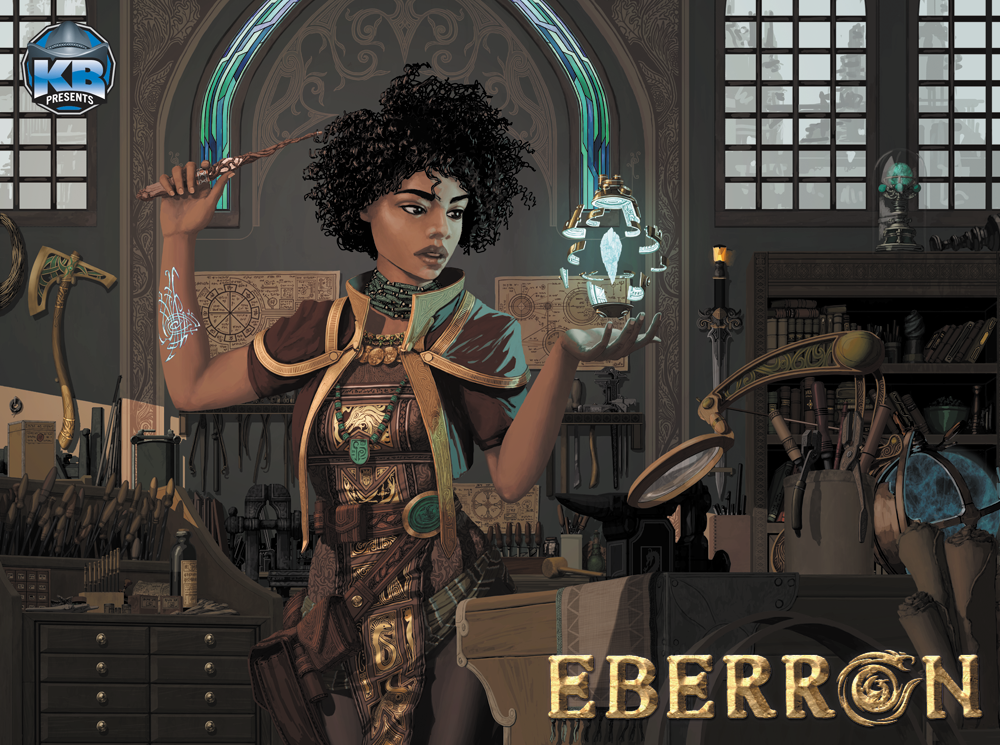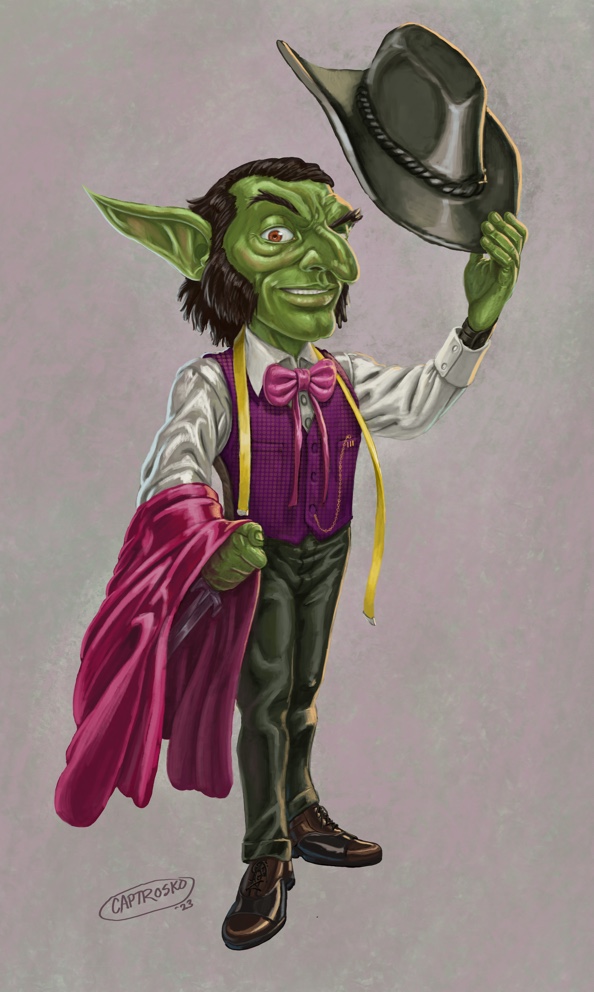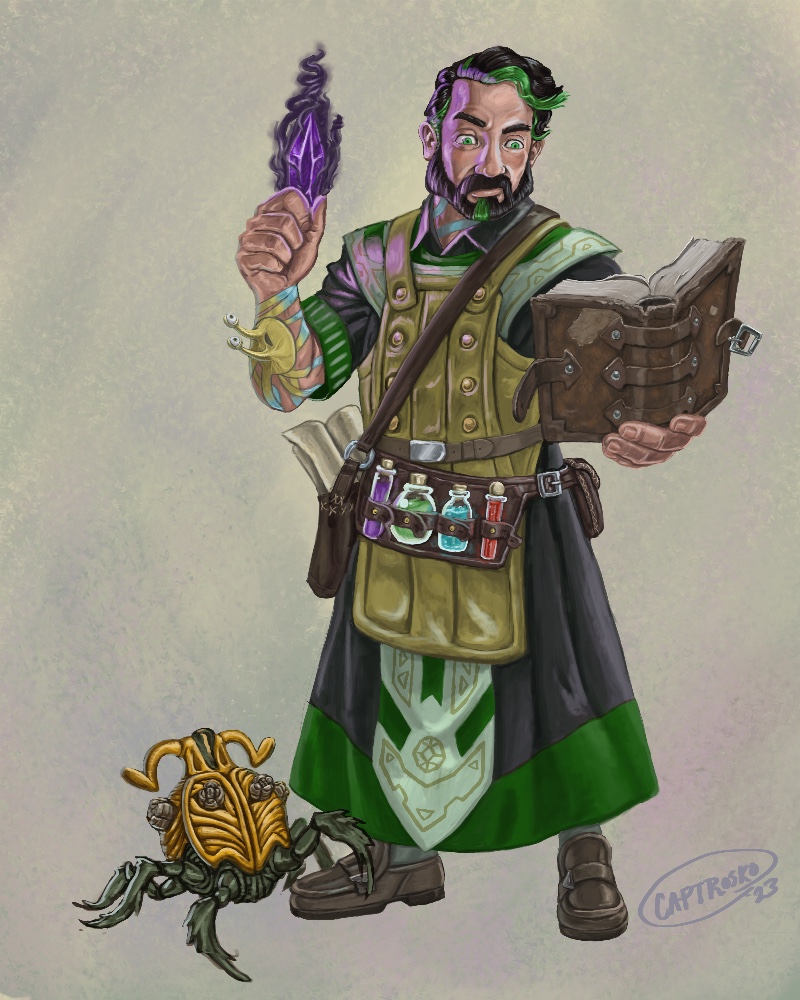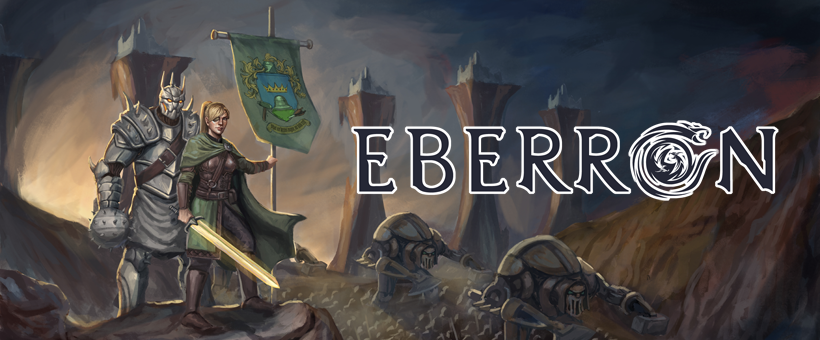
When time permits, I like to answer interesting questions posed by my Patreon supporters. Questions like this…
I have a session coming up that I’m setting at the Tain Gala. I was curious what sorts of things might go on at the gala that a level 3 or so party would reasonably be able to take part in? My hope for the session is that the players will walk away having made a good impression with some wealthy folk and have it lead into them gaining a group patron.
The Tain Gala was first introduced in the Sharn: City of Towers sourcebook, which had this to say about it.
The Tain Gala (first Far of each month): Balls, galas, and feasts occur throughout the year, as ambassadors, nobles, and dragonmarked heirs wine and dine their relatives and associates. However, the Tain Gala has become an institution in Sharn. The ir’Tains, one of the oldest and most powerful families in Sharn, owns many towers and their wealth rivals that of the Kundarak clan. The guest list of the Tain Gala defines the social order of the city. The families with permanent invitations to the Gala, the Sixty, are the royalty of Sharn.
In addition to these aristocrats and wealthy gentry, Lady Celyria ir’Tain does her best to invite a few unusual celebrities to entertain her guests—artists, poets, and sometimes adventurers. Aside from fantastic food and drink, such guests receive generous gifts and a temporary increase in status; for the next month, the attitude of any member of the Sixty is increased by one category when dealing with the celebrity. An adventurer known to be a friend of Lady ir’Tain often receives invitations to other events or other forms of special consideration.
The Tain Gala is first and foremost a place for the wealthiest and most powerful families of Sharn to mingle: to see and be seen, to share news and gossip, and to network with one another. It is a celebration of their power and wealth, which is displayed through the decor, the clothing, the food, and the entertainment. The attendees will eat, drink, gamble, and dance—all of which provide opportunities to share gossip and discuss plans. Eligible heirs will court and be courted. People engaged in business will talk to allies and rivals. Powerful people will discuss politics with city councilors. So it is a place to celebrate and to be entertained, but there are countless deals and schemes unfolding in the shadows. If you want a quick glimpse at what this is like, I suggest you watch Bridgerton or The Gilded Age. The Sixty Families are engaged in a complex dance that has been going on for ages and which will continue long after tonight.
Against the steady backdrop of the Sixty Families and their negotiations and intrigues, entertainment changes from month to month. There will always be music and dance; here’s a random table of possible performers.
Tain Gala Performers
| d8 | Performer |
| 1 | Taleth of the Forgotten Choir. A harpy songbird from Droaam and devotee of the Fury, whose enchanting voice draws emotion from even the hardest heart. |
| 2 | Castalo Con Cavaron. One of the finest Thurimbar players of the modern age, this Zil gnome weaves the complexities of an orchestra with his mystical rod. |
| 3 | The Hydra Quintet. The current prodigies of House Phiarlan’s Demesne of Music. |
| 4 | The Brelish Symphony Orchestra. The top members of the orchestra, drawn away from the Kavarrah Concert Hall for this command performance. |
| 5 | Elvinor d’Phiarlan. The current matriarch of House Phiarlan, giving a rare performance of the legendary Dance of Twenty Shadows. |
| 6 | Strings of Steel. A warforged trio that’s become a sensation. Two members of the trio were built to perform, while the third is a former war hero now devoted to music. |
| 7 | Duo Delo. A pair of changelings who blend song and dance, switching parts and voices throughout the performance. |
| 8 | Hammertail. A trio from the Talenta Plains who combine percussion with sounds generated by small glidewings. |
Beyond that, there will be special guests who have been invited to provide entertainment, whether through actual performance or simply by sharing their stories in conversations. There could be poets, actors, athletes or illusionists who will entertain others with impromptu performances. There might be war heroes, displaced Cyran nobles, or ambassadors from Aerenal or Riedra. This Tain Gala Guests table can help with random ideas, but it’s just a foundation; the point is, there will always be a small selection of people who aren’t part of the Sixty, who have been invited to liven up the gala.
Tain Gala Guests
| 1d10 | A… | With… |
| 1 | Cyran Refugee | A remarkable artifact |
| 2 | War Hero | A fascinating story |
| 3 | Popular Actor or Poet | An urgent cause |
| 4 | Ambassador | News of a terrible disaster |
| 5 | Passionate Priest | An exotic familiar or animal companion |
| 6 | Legendary Wizard | An investment opportunity |
| 7 | Powerful Noble | An important announcement |
| 8 | City Councilor | A desire to wed |
| 9 | Dragonmarked Heir | A call to action |
| 10 | Wayfinder Adventurer | Roll Again, but the guest is an imposter! |
What about the Adventurers?
The main question to address if you’re running an adventure at the Tain Gala is why are the adventurers there? Here’s a few ideas.
Bodyguards. One of the regular guests of the gala asks the adventurers to accompany them because they are afraid of some sort of threat. This threat could be physical, social, or supernatural—as serious as assassination, or as casual as Saiden Boromar always steps on my feet—you need to make sure that doesn’t happen. The question here is why the guest is using the adventurers and not hiring Deneith or Medani. One option is that using house bodyguards is a sign of fear; the adventurers won’t be recognized as bodyguards by the other guests.
Fifteen Rounds of Fame. If the adventurers have done something dramatic and public as part of their adventures, Lady ir’Tain could want them to come and regale her guests with retellings of their recent deeds. This is an excellent opportunity for other guests to try to hire the adventurers for their own intrigues.
Background. One or more of the player characters could be invited based on their background. An entertainer could be hired to entertain; a good performance at the Tain Gala would open all sorts of doors. A soldier could be asked to share stories, or the gala could be having a special memorial for survivors of an especially brutal conflict. A sage could be asked to lecture on their area of expertise, or to confirm the authenticity of an artifact. In this case, the other adventurers could be present as guests of the honored guest.
Undercover. The adventurers are brought in by a guest who has a secret agenda. Posing as servants or family members, the adventurers are expected to break away and perform some sort of heist or scheme over the course of the gala. Alternatively, the adventurers could be hired by the Royal Eyes, King’s Citadel, or some other espionage agenda and charged to infiltrate the gala disguised as servants or entertainers.
Fight Club. We don’t talk about this, but… If you want to take a darker path, the ir’Tains could occasionally hire groups of adventurers to face off in (usually) non-lethal combat. This could be a special occasion—for example, a way to commemorate the festival of Brightblade—or it could be a dark secret that has been going on for years.
Scandal! Some member of the Sixty could choose to bring a group of adventurers to the Gala precisely because they don’t belong there. Cariana ir’Tain could meet the adventurers in a Callestan club and invite them to come to her home, neglecting to mention the big party that’s happening. Daral ir’Tain could want the adventurers to overshadow a rival noble’s big entrance.
Fifteen Rounds and Background are the best approaches if the goal is to connect the adventurers with a new patron; Undercover and Bodyguards are based on the idea that the party already has a patron who’s bringing them to the gala.
But what do you DO there?
As noted, the gala is a PARTY. People talk, drink, dance. What does this look like in terms of scenes and challenges for players? Here’s a few ideas.
- Conversation. Much of the party is people talking to one another. A question is whether the adventurers are primarily interested in LISTENING—in which case you might have them make Insight and Perception checks to pick up interesting information—or if they are TALKING, in which case they should be making Charisma checks using the skill that matches their demeanor.
- Dancing. Even if they have no interest in romance, adventurers might be asked to dance. At its simplest, a round of dancing could require a Performance or Acrobatics check. For something more dramatic—especially at a gala celebrating an important Cyran refugee—people could dance the Tago or something equally challenging. If romance IS part of the adventurer’s goals, Persuasion, Insight, or Deception could also come into play; you could draw out a single dance with multiple ability checks reflecting both physical and social talent.
- Spotlight. Depending on their background and history, an adventurer could be the focus of attention, asked to regale the gathered guests with a description of their deeds or a demonstration of their skills. Depending on the stakes and the complexity of this, it could be a single ability check or it could be a series of checks that provides greater opportunity for a scale fo success and failure.
- Gambling. There’s always a room where people play games. Depending on the time and the tone of the session, you could resolve gaming with ability checks or you could have players actually play a game. If you take this approach, you could create a unique game for your session; use games like Three Dragon Ante or Illimat; or as suggested in this article, use Chess or Poker as placeholders for Conqueror or Thrones.
- Dining. Eat and drink! An uncouth adventurer could have to rely on Insight or Performance to keep from embarassing themselves; a finicky adventurer might have to make a Wisdom saving throw to force down a particularly unpleasant delicacy. Likewise, adventurers who choose to drink or partake in other intoxicants could have to make Constitution saves (with any relevant bonuses against poison); exhaustion is a reasonable mechanic to use for inebriation.
Now, I’ve suggested ability checks adventurers could make if you WANT to roll dice, but you don’t have to roll dice! Many of these situations work just fine as pure roleplaying. if you do choose to roll, this can be to measure the scale of success rather than to determine success or failure. The soldier can’t actually FAIL at telling her war story—but a exceptional role will make her the center of attention and perhaps earn an audience with the general in attendance. This latter point can be another key to what adventurers are DOING. If they are trying to acquire a patron or if they want to meet an important person who doesn’t mingle, they might have to impress the guests first. In this case, ability checks could be used, but again, failure doesn’t have to mean FAILURE; it just means the performance didn’t impress the people they hoped to impress. It could be as simple as telling the adventurers to get an audience with Saiden Boromar tonight, each one of you will have to do something that impresses people; you’ve got two chances. What do you do?
That’s all for now! This is only the tip of the iceberg, but hopefully it gives you some fun ideas to work with. Thanks to my Patreon supporters, who make these articles possible; I’m posting an extra People You Meet At The Party table on Patreon as bonus content for patrons. I’ll note that Taleth of the Forgotten Choir, the harpy pictured above (drawn by Matthew Johnson) is a player character in the new campaign I’m just starting for patrons! In addition, GenCon is coming up and some of my events are getting booked up: here’s my schedule, though I am NOT in Elisa Teague’s Legacy game and I’m in the 2 PM game on Sunday! I’d also like to give a shout out to friends making good things: KP11 Studios’ Project Dastan, the first studio actual play in India; Todd Stashwick’s Progcore Fantasy: Dark Age of Theer; and Foam Brain Games’ Lost Tome of Monsters 2!
Enjoy the Gala!





